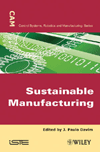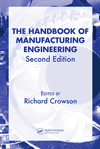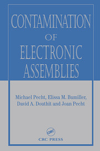Today, nearly 70 percent of all printed circuit boards (PCBs) are assembled with no-clean solder paste. Michael T. Konrad, president of Aqueous Technologies (Rancho Cucamonga, CA), smiles when he considers the multiple ironies of that statistic.
"No-clean is the most popular flux to clean," he says. Since most manufacturers have fine-tuned their assembly lines to run no-clean paste, they are reluctant to adapt their processes to accommodate other types of paste. Instead, they run all their boards with no-clean paste, and just clean those that need to be cleaned.
And that leads to another no-clean irony: The flux residues left behind by no-clean pastes are more difficult to remove from PCBs than other fluxes. "The no-cleans are designed so that they don't have to be cleaned," says Doug Dixon, product manager for Multicore solders at Henkel Loctite Corp. (Industry, CA). "Because the residues can be left on the board, they're not necessarily designed to come off. That creates a conundrum if you need to clean off the residue."
No-clean solder paste is more accurately described as low-residue solder paste, says Dixon. After reflow, the flux leaves a small amount of noncorrosive, resinous residue on or around the solder joints. This residue varies in color from transparent to amber, depending on the reflow temperature and the flux resin.
How much residue remains on the board depends on the amount of solids-resins, gelling agents and activators-contained in the flux. The lower the solids content, the lower the flux residues left on the board. The fluxes in most of today's no-clean pastes contain 50 percent to 70 percent solids.
"In terms of leaving a clean appearance, no-clean solder pastes are as good as any of the water-soluble solder pastes," says Dixon.
There are several reasons to remove no-clean flux residues from PCBs. Assemblers first began cleaning no-clean fluxes when problems emerged with in-circuit testing, says Steve Stach, president of Austin American Technologies Corp. (Austin, TX), a manufacturer of cleaning equipment. The residues from early no-clean formulations were gummy, and test pins could not penetrate the flux to make electrical contact with the test pads. In addition, the residue would gradually build up on the pins, causing problems with maintenance and test accuracy. However, the most recent formulations of no-clean solder paste have largely eliminated this issue.
Today, one of the most common reasons to remove no-clean fluxes is to prevent malfunctions in circuits with clock speeds over 1 gigahertz. "When you get above 1 gigahertz, the electrons are conducted on the outer surface of the conductor," says Stach. "If there's flux on the conductors, it can act as a conductor, too, and interfere with the signal."
Another reason to remove no-clean fluxes is to increase adhesion of conformal coatings and underfill materials. "The flux residue can absorb moisture," explains Stach. "So when you dispense an underfill material beneath a flip chip, and heat it to curing temperature, you can get a little pocket of steam or gas. Eventually, that can cause the underfill material to separate from the board, creating a pathway for the environment to penetrate the assembly."
Assemblers also may clean no-clean fluxes to remove solder balls; to prevent corrosion in PCBs exposed to extreme environments; or simply to improve the cosmetic appearance of the boards.
Cleaning No-Cleans
The no-clean revolution has transformed PCB cleaning from an inline process to a batch process. "If you're only cleaning 20 percent of your boards, it's hard to justify an inline machine," says Konrad, whose company supplies both batch and inline systems. "Inline machines work best when they're not run with chemistry. Inline machines are chemical hogs."
No-clean solder pastes cannot be cleaned with water alone. A solvent or a solution of water and saponifier is necessary. Most no-clean pastes require an organic saponifier for effective defluxing, but some can be cleaned with inorganic saponifiers. In addition, the temperature and pressure of the water usually need to be higher than with water-soluble solder paste, and boards may need to spend more time in the cleaning machine.
The choice of flux chemistry makes a difference. Some no-clean pastes, particularly the newest formulations, are easier to clean than others. "Paste manufacturers are finally catching up to the fact that some people are cleaning no-cleans," says Konrad.
"No-clean fluxes are available in a wide range of chemistries-low solids, high solids, hard residues, soft residues," adds Stach. "There's no one rule for cleaning them."
No-clean fluxes that contain halides leave the most residue, but are easier to clean. Mild cleaning agents and short wash times can be used. Conversely, halide-free no-clean fluxes produce less residue, but are more difficult to clean.
For best results in both cleaning and soldering, it's important to follow the paste manufacturer's recommended reflow profile. Exposing no-clean solder pastes to excessive temperatures will cause the flux residue to harden and darken, while the solder joint surface may become dull due to oxidation.
"The biggest obstacle to cleaning no-cleans is the reflow profile," says Konrad. "If you do not follow the paste company's recommendations, it could result in harder-to-clean parts. You need an aggressive profile to burn off the volatiles and the flux and make the joints look clean. If the reflow temperature isn't hot enough, the boards will look like they're covered in flux. But if it's too hot, the remaining residue will be more difficult to remove."
For this reason, lead-free no-clean solder paste can be particularly difficult to clean. "Reflow temperatures for lead-free solder are upwards of 240 C," says Dixon. "So the residues are extremely hard to get off. They're really baked on."
In the end, suppliers of solder paste and cleaning equipment agree: Engineers are well-advised to resolve cleaning issues early in the design process, before decisions about solder paste, coatings and other materials are locked in. This is especially true with high-reliability products, such as avionics or medical devices, that must pass lengthy qualification procedures. Can flux residue, no matter how inert, be left on the board? If cleanliness is critical, can a water-soluble paste be used? If not, some no-clean pastes are more cleanable than others. "If you can change to a paste that's more cleanable, it makes life a lot easier," says Stach. "If not, you may have to take the brute force approach to remove the flux."





